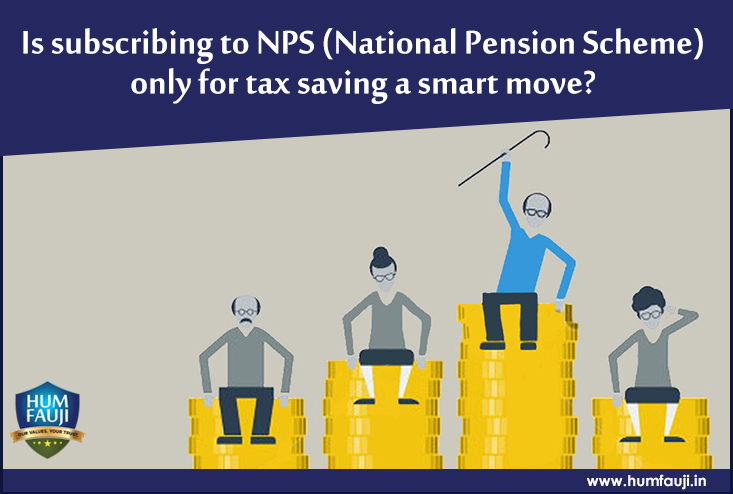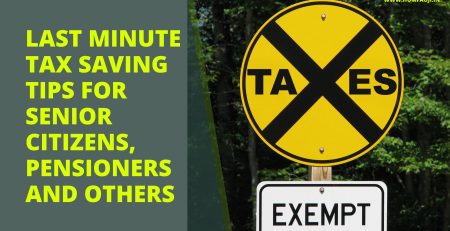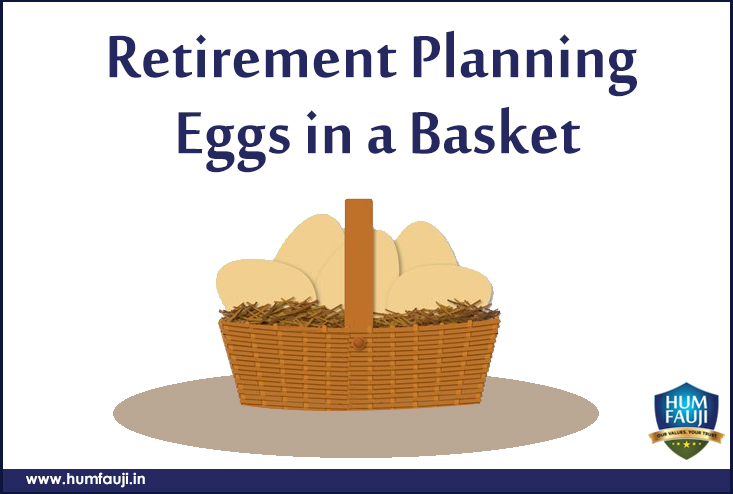- Do you buy a car only because it has nice headlights?
- Why don’t you buy a house only because there’s a mango tree in front of it?
- Why not marry a girl only because she bought your favourite brand of chips from a store?
Outrageous, right? You don’t do any of these. Then why do you take a long financial liability upon yourself just because there’s a small tax benefit that comes with it?
Lately, NPS has become a buzz word amongst fauji circles. The reasons are not far to seek:-
- Tax season is upon us. You’ve heard that NPS gets you an additional Rs 50,000 of tax saving under Section 80 CCD(1). Then why not?
- PFRDA (Pension Fund Regulatory and Development Authority) is promoting it hugely through advertisements – last year it was pure mis-selling by calling all its schemes fully safe, and this year the lure is additional tax saving.
- The NPS schemes in general have performed well due to good Debt and Equity markets in the recent past.
We’ve also been receiving a lot of enquiries from serving, retired and corporate-employed armed forces officers asking us if it is good for them, in light of the additional tax benefit. In fact many of them have taken it already and then are asking us if it is good for them! Let’s see.
Basic Features of NPS
- NPS is a product specifically made for retirement saving, which is closely regulated and monitored by a Govt agency, PFRDA.
- There are eight fund managers (ICICI, HDFC, LIC, Kotak, Birla, Reliance, UTI and SBI) who are competing for your money, thus ensuring fair returns since you have the flexibility to shift between fund managers based on performance. Fund management charges are quite low. However, the pension (annuity) will come from Insurance companies which take over your corpus when it is time to get you pension.
- There are inbuilt checks to ensure you cannot take out money easily at your whims and fancies, thus ensuring you get the power of compounding. You can contribute even beyond 60 years of age till maximum of 70 years.
- Your contributions are tax exempt under Section 80C (ie, max Rs 1.5L as on today, along with host of other schemes) while your employer can contribute up to 10% of your basic salary if it wishes to. Basically, this part goes to your retirement saving and saves you tax since it does not remain part of your salary.
- Lastly, there are four types of schemes available – equity (Option E), corporate (C), Govt securities (G) and Alternative investments (Asset Class A). You could do a manual model and choose out of E, C, G or A take the auto allocation (Lifestyle) option which allocates between E, C and G as per your age. The latter has further three sub-choices.
- The negative points are that the withdrawal rules are tough (which is good in a manner since it is for retirement living), you have to take compulsory annuity (pension) with at least 40% of your own contributed corpus on reaching 60 years of age (relaxable by three years) and that the annuity (ie the pension) is fully taxable. You can withdraw up to 60% of your corpus at the age of 60 but only 40% part is tax-free. If pension is desired between 55-60 years of age, at least 80% of the corpus gets locked to give you pension and you can only withdraw 20% in lump sum on retirement. There is an option to withdraw up to 25% of the corpus earlier too but that is for special circumstances only.
Is it for you if you are a Serving Fauji Officer?
Additional Rs 50,000 tax rebate (saves you yearly tax of Rs 15,000 if you’re in 30% tax bracket) may seem great now. But remember, if you’re going to get Govt pension, the NPS pension is likely to be miniscule in comparison, there will be no increase in it once started and there is no tax rebate on the pension, ie, it’ll be fully taxable as on date. Hence, its EET tax regime (EET – Exempt when you contribute, Exempt while it remains invested and taxable when you withdraw) is essentially a tax-deferral scheme – the tax pain happens later and not right now. Even part of lump sum withdrawn amount (41% – 60%) taken by you on retirement is taxable. We’re also not comfortable with Insurance Companies giving you the pension (annuity) since their pension rates are traditionally very low.
A large part of the amount you save is going to get locked up for your entire life, to give you pension. This locked portion is at least 80% of your accumulated funds if you want pension to start between 55-60 years of age (ie, you decide on an early retirement) and 40% if pension is desired after 60 years of age. The only exemption to this rule is that you can withdraw full amount if the total accumulation is less than Rs 2 Lakhs. The lure of saving a bit of more tax is always enticing, but please take care that it should not become a millstone around your neck. And what’s so great if you save a tax of Rs 15,000 in a whole year, if it is cause you a lifelong liability?
Is it for you if you have retired from Armed Forces with a pension?
If you’re above 60 years, you cannot subscribe to NPS. If you’re below that, you have to weigh how much will you be able to contribute in years to come so that it gives you any meaningful pension. A small tax benefit on Rs 10-15,000 (depending on whether you’re in 20% or 30% tax bracket) in a whole year should not be the deciding factor. Moreover, if you’re already getting a disability pension which makes the entire Govt pension tax-free, NPS has no benefit for you.
Even if you’ve taken Premature Retirement (PMR) and you’ve qualified for Govt Pension, NPS utility to you is doubtful. However, if you’re employed in a private company and your employer agrees to contribute up to 10% of your Basic + DA as employer contribution (under Section 80CCD(2)), you need to work out how much you actually save in tax since this contributed amount does not remain part of your taxable salary. It will have to be calculated in every individual case and take into account the additional Rs 50,000 80CCD (1) tax benefit also.
We ran a calculation check on NPS Vs Mutual Funds with maximum equity contribution on both for an investing period of 15 years. We feel that equity mutual fund contribution of similar amount will be more beneficial due to the better likely returns and fully tax-free pension got out of ‘Systematic Withdrawal Plan (SWP)’ from mutual funds.
Is it for you if you have retired from Armed Forces but without a pension?
If you’ve retired from the armed forces without earning a pension, it implies that you’re comparatively young. In that case, you can seriously look at NPS and make it as your prime retirement pension tool. However, please do slight active management of your funds by taking Auto Choice – Lifestyle 75 (the 75% equity option).
Alternately, if you have the financial discipline, you may go in for Mutual Funds option too to plan a tax-free pension without anybody dictating when should you retire. Retirement Mutual Funds are also an excellent alternative since they’re specifically for this purpose and have a large choice for you. But please go in for funds only with an established track record.
Our Final Take
In general, we feel that:-
- Investing in NPS for the sake of the additional Rs. 10-15,000 tax break will be quite short-sighted. Due to the restrictions on withdrawal of the collected corpus for a very large period of time, it does not seem worth it, if you’re already getting a Govt pension.
- The EET status makes it tax inefficient to a large extent. You’re only kicking the can down the road.
- If you’re not getting fauji pension, investing in ELSS (tax saving equity mutual funds) or Retirement Mutual Funds might be a better option. You get 80C benefits when you invest, the accumulation is tax-free and your withdrawals as also pension that you’d take will be fully tax-free. The disadvantage, if you may call it so, is that it would require either an active portfolio management at your end or you hire a good financial planner to do so. But if you do not wish to do any of that, NPS is a good option. Preferably start with Auto Choice (LC75) if you’re young and encourage your employer to also contribute for you.
In case you’re not very familiar with the mutual funds and their benefits, you may go through our blogs and other pages of our website in the Mutual Funds section, to get an insight into this wonderful investment option.
And do not buy a car only because it has nice headlights?
For more information, feel free to reach us on, contactus@humfauji.in or call + 011 – 4240 2032, 40545977, 49036836 or
Subscribe to our blog for regular financial updates or follow us on | Facebook | Twitter | Linkedin














Leave a Reply